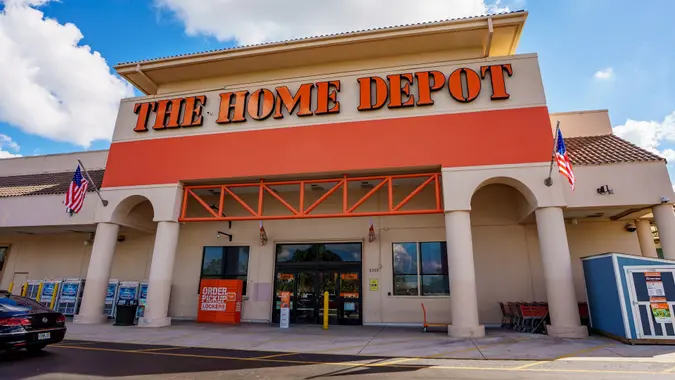These Are the 6 Biggest Culprits of Overspending

Commitment to Our Readers
GOBankingRates' editorial team is committed to bringing you unbiased reviews and information. We use data-driven methodologies to evaluate financial products and services - our reviews and ratings are not influenced by advertisers. You can read more about our editorial guidelines and our products and services review methodology.

20 Years
Helping You Live Richer

Reviewed
by Experts

Trusted by
Millions of Readers
Hit hard by lingering inflation and the rising costs of living, millions of Americans are struggling to get by. And yet, thanks largely to credit cards, which enable us to spend money we don’t have, many of us are further breaking the bank by buying nonessentials that we can’t safely afford. Add to that the fact that many of us don’t even know we’re overspending; in other words, we’re unaware that we could be saving money on certain things.
What are the biggest culprits of overspending and how can we save money on them?
Gym Memberships
In 2023, around 19% of Americans had gym memberships, and by 2030, there are predictions that the fitness industry will have 230 million members, according to Zippia. Exercising is essential to your health, so you shouldn’t cut it out of your life, but you may be breaking your budget with a gym membership, which, on average, costs between $40 and $70, according to GoodRX Health.
You could save here by trying out new gyms regularly to access a free or discounted trial period, sharing a membership, if possible, and even by negotiating membership fees.
Cell Phone Plans
This one is a perfect example of something you may not realize you’re overspending on: cell phone plans. CNBC reported that as of this year, the average monthly expense for a cell phone plan is $144.
You could spend a lot less than that if you don’t choose a payment plan for your phone — meaning you pay the full price upfront — switch to a lesser-known carrier and forego an insurance policy, which can add up significantly over the months.
Dining Out
US Foods found that over the course of a month, Americans spend an average of $166 per person on going out to eat. Though groceries aren’t cheap these days, cooking at home is almost always less expensive than going to a restaurant or ordering takeout.
Frankly, there aren’t a lot of ways to cut costs on dining out other than to simply not do it as often, if at all. At the very least, reserve this splurge for special occasions.
Food Delivery
Yes, it’s terribly convenient and can add a fun and delicious flair to a so-so day. But ordering food in is a guaranteed way to overspend. Thanks to the rise of food delivery services such as UberEats and DoorDash, Americans are hooked on this splurge. According to a 2022 survey of 1,021 delivery customers by Circuit for Teams, the average consumer spends about $1,850 a year on delivered food.
Again, if you make your breakfast, lunch or dinner at home — meal planning can help here — you’ll save tremendously.
Subscription Services
Did you finish “Baby Reindeer” on Netflix? Are you watching “House of the Dragon” on Max? Did you listen to the latest Taylor Swift album on Spotify? What are you listening to on Audible?
Look, we get it: Shows, movies, music and books are important aspects of today’s cultural experience. But we’re seriously overspending on subscription services. According to a survey by CNET, 12% of people say their subscriptions are outside of their budget — but they pay for them anyway.
It may be unrealistic to eliminate all your subscription services, but you can probably stand to part with a few. For those that you keep, split the monthly free by sharing a membership — and splitting the cost — with a friend.
Coffee
For many, coffee is integral to their morning routines. This in itself isn’t necessarily a bad thing — though too much caffeine may be harmful to your health — but that cup of joe from Starbucks and other cafés is unequivocally harmful to your finances if you’re living on a frugal budget. According to Drive Research, 16% of people spend $21 to $30 a month on coffee at shops each month; 14% spend $40 or more, and 12% spend $31 to $40.
Stick to making your coffee at home. To maximize savings, invest in a coffee grinder and grind beans on your own.
 Written by
Written by  Edited by
Edited by 

























